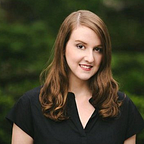At Home in the East Village
Two creatives take on selling their Alphabet City flat, letting go of New York City living for a new adventure in Kyoto, Japan.
Words: Jessica Scherlag
Images: Will Ellis for Donna Dotan Photography
After graduating from Yale University with a Master’s of Fine Arts in Sculpture in 1979 and 1981, artists Bill Toole and Etsumi Imamura made a smart investment in downtown Manhattan, purchasing two units in an industrial building located on the riverfront fringe of the East Village. Once the couple moved in together, they spent years making updates to their fixer-upper, painting the floors and brick walls a heavenly white, customizing a sublimely functional kitchen, and replacing century-old windows for better light.
Seeking more room to work and the quiet of the countryside, the duo has since designed and built a live/work home in the Madawaska Highlands of Ontario as well as acquiring land in Kyoto, Japan. When the time came to sell their unique New York City abode, Bill and Etsumi decided to work with Compass agent and fellow East Villager Mark Griffith.
How did you find this apartment?
Bill: It was owned by a guy in the neighborhood who was a plumber and a bricklayer. He owned a bunch of buildings on the block that were all connected. He decided to sell this one––each floor cost $18,000 at the time.
Etsumi: It’s a former furniture factory. The barges would come up the East River with the wood, and they would dock nearby.
What were you doing in the East Village in the 1980s?
Bill: I was working as a sculptor, but it is really expensive and takes up a lot of space, so I decided to paint.
Etsumi: People didn’t want to live here back then. Taxi drivers wouldn’t even come here.
Bill: No one even wanted to visit. When I moved into the building, there was no heat, no insulation in the ceiling. In the winter, snow would drift in.
Do any of the original details remain?
Etsumi: You can see the outlines of the old fire doors — the buildings were all connected. We made updates over time: new windows, painted brick.
Bill: In the backyard we still have an old boiler from the 1880s, back when buildings had no electricity. They would drop wood scraps in there to make steam to move the pulleys to run the machines.
How has the neighborhood changed into a desirable place to live?
Bill: It was a gradual shift. What you see now walking through Tompkins Square and along the East River is indicative of it. The East Village was known for its art community, but those artists have moved out. They’ve gone to Chelsea or Williamsburg.
Etsumi: As soon as you get on Avenue C, it’s pretty busy with restaurants, too.
Bill: There’s a cheese monger and restaurant on Avenue C called Barnyard and a coffee shop called Ninth Street Espresso. They went though a number of incarnations, but their arrival marked a change in the neighborhood.
How do you use this apartment now?
Bill: Well, we lived upstairs when we fixed up this unit, and then we lived downstairs when we fixed the upstairs unit, so it flipped back and forth. My studio was upstairs until recently.
Etsumi: I use the downstairs as a showroom and office. We also had tenants who lived in the rear bedroom. There’s a Japanese supermarket nearby called Sunrise Mart, and they have a notice board there where we find tenants — usually Japanese students.
How did you become interested in design?
Etsumi: I studied sculpture.
Bill: Etsumi’s family in Japan have been sculptors for more than 300 years.
Etsumi: Donald Judd influenced me a lot. He designs very minimal art and furniture which is very simple. I’ve always liked his work. About four years ago I had the chance to show my work in Japan. For some reason, I had the idea to use furniture in an art show, so that was the beginning.
Bill: Donald Judd’s furniture is not comfortable at all!
Etsumi: Comfort was important to me when I designed these pieces.
Bill: I stuck with art, and Etsumi shifted to design, which was actually really good to do because design looks different when you arrive at it via sculpture.
Why did you decide to sell this unit?
Bill: We have a home in the Madawaska Highlands of Canada. Last fall I moved all of my studio to Canada. I just wanted peace and quiet. Etsumi designed the place; it’s just perfect.
Etsumi: We also decided to build a house in Kyoto, Japan. Last summer we went there, looked at property, and acquired the land. We have a very good architect, a friend we’ve known for a while who is on the same design wavelength as us.
What will you miss most about living here?
Etsumi: I will miss the Union Square Greenmarket and the Tompkins Square Market on Sundays.
Bill: I am only going to miss three things in New York: The Metropolitan Museum’s Greek and Roman study collection, a coffee shop called Abraço (the same guy has run it for years, and his wife does the pastries), and our Aga stove. It was designed in the 1920s, and it was so perfect that they never changed it.
Etsumi: And the art galleries like Pace and David Zwirner!
Bill: I’m looking forward to living in Kyoto though––it is a smaller city, only 1.5 million people, but it’s the cultural center of Japan. There’s one big problem — the language — but I’m learning.
